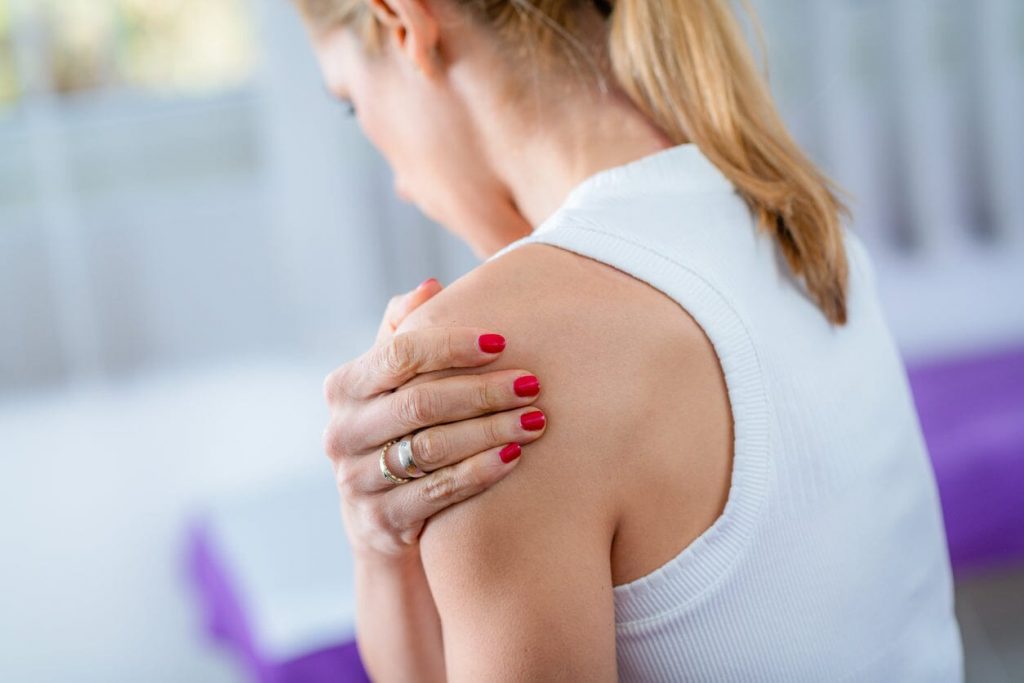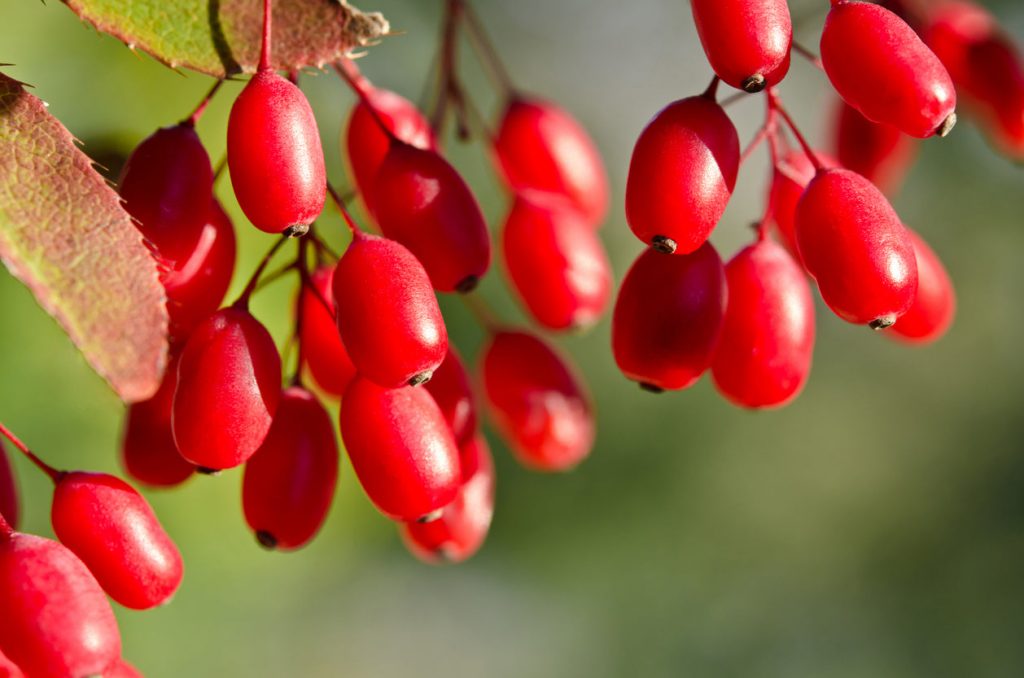Discover the dietary changes you can make to lose menopause weight and belly fat in a sustainable and healthy way, and get inspiration planning your meals.
If you’re looking to improve your diet and lose some of the weight and extra body fat that comes with perimenopause and menopause, we have some healthy, science-backed tips that can help.
We’ll explore how eating a wider range of plants, increasing your protein intake, making healthy swaps for refined carbohydrates and limiting ultra-processed foods could all lead to weight loss during menopause.
And we’ll explain why restrictive, calorie-counting diets are not the right approach for maintaining a healthy weight in the long term.
We’ll also give you some meal-planning inspiration to put these principles into practice, and look at how the right kind of exercise can combine with a better diet to boost your weight-loss potential.
For help with a range of perimenopause and menopause symptoms, from bloating to brain fog, hot flushes to anxiety, try The Better Gut probiotic supplements.
To find out more, visit The Better Menopause. And use the discount code WELCOME10 for 10% off your first order.
Menopause weight gain and how diet is involved
Weight gain and increased belly fat are among the most common symptoms of both menopause and perimenopause. According to large-scale studies, women gain around 1.5 kilograms (kg) per year during perimenopause.
As with many perimenopause and menopause symptoms, reduced oestrogen levels are partly to blame, leading to body fat being distributed around your belly and torso rather than your hips and thighs.
These changes are also associated with a loss of heathy muscle, which can lead to a higher ratio of fat to muscle. So even if your weight hasn’t changed, you may notice that your body shape has.
There are strong links between your diet, hunger and both body weight and body composition during this time, too:
- Increased ‘hunger hormones’: During perimenopause, your body produces significantly higher levels of ghrelin, the hormone responsible for appetite. This can increase hunger cravings and boost activity in your brain’s reward centres when you eat.
- Reduced protein absorption: As you go through menopause, and as you get older, your body becomes less efficient at turning the protein in the food you eat into muscle. This can reduce your metabolic rate – the amount of calories you burn day-to-day – resulting in increased body fat and weight gain.
- Worse blood sugar responses: Eating foods containing refined carbohydrates and sugar can cause spikes and subsequent dips in your blood sugar levels. These ‘crashes’ can lead to increased cravings for more of the same foods, creating a vicious cycle. As you go through menopause, these blood sugar responses become more pronounced.
- Poor sleep and hunger: Another common symptom of menopause, poor sleep lowers your metabolic rate and reduces your energy, which can lead to more snacking, especially on carb-heavy foods. This in turn can feed in to the cycle of poor blood sugar responses and increased hunger.
Diet tips for healthy menopause weight loss
Forget restrictive, short-term diets, here are some key principles that can contribute to healthy and sustainable weight loss during menopause.
Harness the power of plants
It’s no secret that eating wide variety of plants is one of the best ways to stay healthy at any stage of life. But studies looking specifically at weight loss in menopausal women have shown that diets with a higher ratio of plant to animal proteins can help you to lose fat while maintaining healthy muscle mass.
Along with the fibre in plants, which can help you to feel fuller, many contain special types of carbohydrates called prebiotics. These act as fuel for the friendly bacteria in your gut. That includes a section of your gut microbiome called the estrobolome, which is responsible for metabolising and circulating oestrogen around your body. Higher oestrogen levels are linked to better weight control.
Examples of plants containing prebiotics include:
- artichokes
- asparagus
- berries
- chicory
- tomatoes
- garlic
- onions
- beans and pulses
- leafy green vegetables
- wholegrains, such as oats and barley
- nuts, including almonds
- seeds, like chia and flaxseeds
Many plants also contain nutrients called phytoestrogens, which mimic some of the effects of oestrogen. A diet high in certain phytoestrogens – such as isoflavones, found in legumes like soya beans – can help to reduce belly fat and increase muscle and bone mass. There’s also evidence that they can help to reduce hot flushes for some women.
Boost your protein intake
Getting more protein into your diet can help you to maintain healthy muscle, keeping fat at bay. Studies have shown that menopausal women who eat more protein have less body fat.
That may be partly because your appetite for protein increases during menopause – if you don’t get enough, you’ll continue to be hungry and are likely to eat more unhealthy foods instead.
Some experts say menopausal women should eat 1–1.2 grams (g) per kg of body weight per day, half of which should come from plant sources. That means, for example, that a woman who weighs 70 kg – around 11 stone or 150 pounds – should aim to eat 56–84 g of protein each day.
However, studies have found that menopausal women with more healthy muscle, less body fat and a smaller waist circumference eat an average of 1.6 g of protein per kg of body weight, the equivalent of 115 g per day for a 70 kg woman.
Healthy sources of protein include:
- legumes, like beans and pulses
- tofu
- nuts and seeds
- fish
- chicken and turkey
- eggs
- whole dairy products, like milk and yoghurt
Try to limit ultra-processed foods that are advertised as high in protein. The protein they provide often comes without the other nutritional benefits of whole foods and with additives that are positively unhealthy.
Make healthy swaps for sugar, carbs and UPFs
Refined carbohydrates like white rice, bread and pasta, and foods and drinks that are high in sugar, can all cause spikes in your blood sugar after you eat.
These spikes can be followed by crashes, leading to energy slumps and increasing your appetite for another sugar or carb hit. In fact, studies have shown that people who experience these crashes can eat as many as 300 extra calories a day – not helpful if you’re aiming to lose weight.
If you get menopause symptoms like brain fog or mood swings, you may notice they’re worse an hour or two after lunch. If so, blood sugar dips could also be involved here.
Many foods and drinks that are high in added sugar are also ultra-processed and contain unhealthy additives. Consuming more of these ultra-processed foods (UPFs) has been linked to an increased risk of weight gain and obesity.
Making healthy swaps like those below could significantly reduce your chances of experiencing post-meal cravings and putting on weight, as well as improving your overall nutrition:
- Switch refined carbs for whole grain versions, like brown rice and wholewheat bread
- Even better, swap carbs for legumes – beans, lentils or chickpeas are great lower-carb alternatives to grains that will also boost your protein and fibre intake
- Exchange sweets, cakes and ultra-processed snacks for nuts, fruit, natural yoghurt or vegetable sticks with humous
- Choose tea, coffee or plain sparkling water over other fizzy drinks and fruit juice
Embrace beans
We’ve already mentioned legumes – beans and pulses – but they have so many benefits related to menopause weight loss that they deserve their own section.
Here’s why you should aim to get more legumes into your diet:
- Observational studies have shown that women who eat more legumes have lower body fat percentages and smaller waist measurements
- They’re high in protein, which can maintain muscle mass and reduce fat
- They’re high in fibre, which helps you feel full
- They contain prebiotics, which boost your gut microbiome
- They contain phytoestrogens
- They’re a great alternative to carbs like rice, which could reduce after-meal sugar crashes and cravings
Legumes come in a huge variety, from pulses like lentils and chickpeas to broad beans, butter beans and soya beans, green beans, peas and even peanuts.
We’ll look at some ways to get more beans into your diet in the meal planner below.
Avoid restrictive diets – eat mindfully
While eating less can help you to lose weight, diets that restrict entire food groups are not healthy – especially during menopause – and strict calorie-counting regimes rarely lead to long-term weight loss. In fact, they can actually slow your metabolic rate, making it harder to keep weight off in the future.
Instead of going on a ‘quick fix’ diet that you might later abandon, think more about making a long-term lifestyle change and focus on eating healthily rather than with only calories in mind. Learn to prepare healthy food that you enjoy and will want to eat for the foreseeable future.
One way to learn to appreciate your food, and potentially eat less, is to practice mindful eating. Give the meal you’re eating your full focus – don’t eat while watching TV, reading or looking at your phone. Notice and appreciate the smells, flavours and textures of each mouthful. Chew slowly and savour.
Menopause diet meal planner
We’ve translated some of the menopause weight loss tips above into meal ideas – use them as they are or as inspiration to put your own spin on.
Try to use beans or whole grains instead of refined carbohydrates. Include plenty of vegetables and healthy protein. Limit ultra-processed foods. And where possible take the time to savour your meals.
Breakfast
- Whole natural yoghurt with nuts, seeds and berries
- Crushed avocado with chives on a slice of wholegrain or sourdough toast
- Bircher muesli: grated apple, steel-cut oats and plain yoghurt or kefir (make fresh or leave overnight)
Lunch
- Smoked tofu or smoked mackerel salad with roasted broccoli, peppers and pumpkin seeds
- Crushed chickpeas with olive oil, ras el hanout spice mix, avocado, cherry tomatoes and sesame seeds
- Omelette: cheese and tomato / mushroom / onions and peppers, with a side salad or slice of sourdough
Dinner
- Yellow lentil dahl mixed with wilted spinach and topped with poached eggs
- Butter bean cassoulet with onions, carrots and chicken thighs
- Pan-fried salmon with asparagus and rosemary puy lentils
Snacks
- A portion of houmous or bean dip with crudites (sliced peppers and cucumbers, carrot sticks, baby corn, green beans, Tenderstem broccoli)
- A handful of mixed nuts
- A piece of fruit
- A few squares of 70%+ cocoa dark chocolate, without lecithins or other additives
How diet and exercise combine to boost menopause weight loss
When it comes to managing your weight during menopause, diet isn’t the only piece of the puzzle. There’s good evidence that adding regular exercise to your routine – especially resistance training – can help reduce both body fat and waist circumference.
Combined with a healthy diet, it also makes it more likely that you’ll keep the weight off in the years to come.
Resistance or strength training can involve lifting weights, doing bodyweight exercises like press-ups or squats or using elasticated resistance bands.
Doing regular resistance training while eating enough protein can help to maintain and strengthen your muscles. This will in turn increase your resting metabolic rate and help to burn fat.
It’s also a good idea to include regular aerobic exercise such as brisk walking, jogging, swimming or cycling in your routine. Health guidelines recommend at least 150 minutes of moderate to vigorous aerobic exercise divided across the week.
Studies involving postmenopausal women have shown that, as well as being great for your overall health, this can lead to modest reductions in weight, waist size and overall body fat.
If you don’t currently do much exercise, it’s important to start slowly and build up to these targets.
Summary
Weight gain and increased fat around your waist are common symptoms of perimenopause and menopause.
Restrictive, calorie-focused diets are not healthy or sustainable approaches to weight loss during menopause and can even slow your metabolic rate, making it harder to keep weight off in the long term.
Instead, studies have shown you can lose weight by following these principles for a healthy whole food diet:
- Eat a wider variety of plants, including plenty of legumes
- Make sure you get enough healthy protein
- Swap refined carbs for whole grain versions
- Limit processed foods and drinks and those with lots of sugar
Adding regular exercise to your routine – especially resistance training – can also help to boost weight loss and reduce your waistline.
The Better Gut probiotic supplements can help with a wide range of perimenopause and menopause symptoms, including hot flushes, anxiety, brain fog and digestive issues.
To find out more, visit The Better Menopause. And use the discount code WELCOME10 for 10% off your first order.









